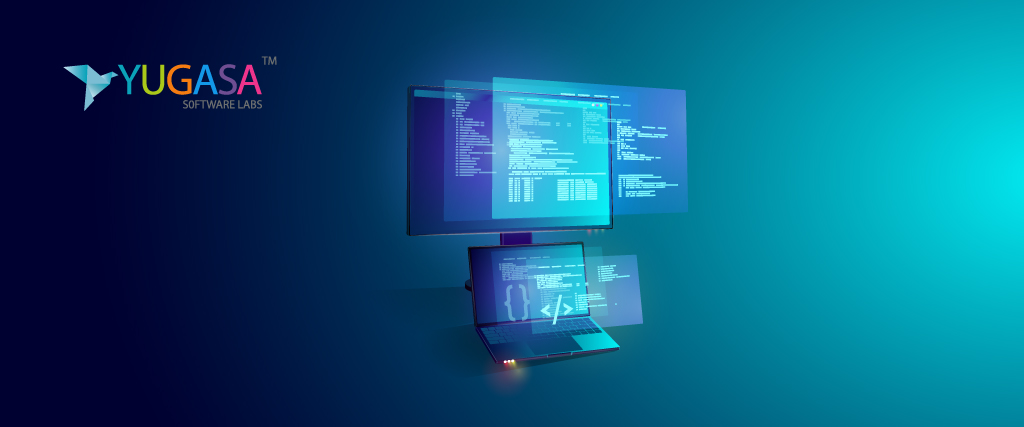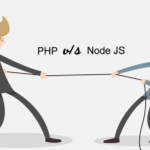Flutter vs React Native 2020: Mobile phone users are constantly on the rise. This has led to a huge market for native app developers. Companies have started preferring apps for marketing and selling because of the vast opportunity.
In the starting, it was difficult to develop native apps because of a major disadvantage. They were limited to a single platform. To have multi-platform support, multiple codebases have to be used. But with advancements in technology and the creation of newer ways to deal with those limitations, we developed frameworks that allowed the developers to create multi-platform native apps using a single framework. The two most important ones being Flutter and React Native.
This article explains both the technologies and helps you to choose the ideal one to develop your multi-platform application.
Flutter vs React Native – What is Flutter?
Flutter is a UI toolkit that allows the developer to create beautiful apps with a single codebase. It was developed by Google in 2014. Originally, it was called “Sky”
But it wasn’t until 2017 when it was first introduced to the developers. It started gaining popularity in 2018 when its first stable version v1.0 was released. This was a production-ready version and thus allowed developers to start using it to develop multi-platform applications with ease.
While it was originally invented and owned by Google, they made it an open-source project later. Now developers from all around the world contribute to its development. This has increased its popularity.
Flutter allows for multiplatform app development using a single codebase. It means you can write code once for an app and then run it on both Android and iOS phones. Furthermore, web compatibility has also been introduced in Flutter now. But it still needs further development before developers can start using it.
What is React Native?
React Native is also a cross-platform app development framework like Flutter. It is owned by Facebook. Its predecessor was React.js, also known as FaxJS at that time. It was first developed and implemented in Facebook’s web app in 2011. In 2013, React language was made open-source, and two years after that, the first release of React Native was launched and made public.
React Native was released much earlier than Flutter and thus has the strategic advantage of being more matured and stable. It also has a bigger developer community which has been working consistently to improve React Native.
There is often confusion among the amateur developers between React and React Native. We will tackle that confusion here.
Difference between React and React Native – Flutter vs React Native
React is a language that is used to develop front end technology for web applications. React Native one the other hand was built exclusively for mobile app development.
React is a library with a set of pre-written functions that help the coders in developing web apps. React Native is a framework that is based on React.
Now that this is out of the way, we can finally focus on the main subject of this article.
Comparison: Flutter vs React Native 2020
To compare both languages, we have to take into consideration the various aspects of both frameworks. The following 8 points would be the main points on which we will compare and contrast the two technologies:
- Programming languages
- Stability
- Architecture
- Installation & Configuration
- User Interface
- Automation and Continuous Integration (CI)
- Customer Base
- Documentation
1. Programming languages
Selecting an appropriate language is an important part of app development. You must feel comfortable with the language and it should have any features you may need.
Dart – Flutter vs React Native 2020
Flutter uses Dart as its programming language, which is also made by Google. It is an object-oriented language. This makes it rather familiar and easy to learn for those who have worked with languages like Java, C++, etc. However, it is a newly developed language and thus has yet to grow.
React
React programming language serves as the foundation for React Native. React is based on JavaScript and thus share many familiar principles. Since JavaScript has been around for ages, it is well known and popular in the developer community.
Stability
Reliability is one of the key elements when you are developing an application. You would want your app to be stable and work the way it should.
Flutter
Flutter is a new framework. And even though it shows a great promise for the cross-platform app development, it is still gradually developing. Unexpected crashes and bugs may often pop now and then. That being said, the current stable versions of flutter have improved upon a lot of areas and the latest versions are considered to be pretty reliable.
React Native – Flutter vs React Native 2020
React Native has been around for a lot longer than Flutter and thus had more time to mature and grow. Its owner Facebook and various other developers in the community have helped to stabilize the framework to a great extent. In this particular section, React Native triumphs over Flutter.
Architecture
All technologies are built differently, even though they may perform the same basic functions. This is also the case with Flutter and React Native.
Flutter
Flutter’s engine is written primarily in C++. It provides low-level rendering support using Google’s Skia graphics library.
React
React’s official framework is Flux but Redux is more popular among the React Native community. Both are similar in the way they work with stateless components.
Installation and Configuration
To start working with any new tool, language, and technology, one needs to properly set up these things.
Flutter
To start working with Flutter, you need to start with downloading and installing Flutter from the official website https://flutter.dev/docs/get-started/install after which you set up the editor and set PATH variables. Once that is done, you can start with your development. Flutter’s documentation is easy to read and follow so the task isn’t that tedious.
React Native
If you are familiar with the Node Package Manager scripts, you may find it easy to run a few commands on your terminal to install React Native. But if not, it might be troublesome. The official documentation for React Native assumes their reader to be already familiar with the initial setup.
https://reactnative.dev/docs/getting-started presents the guidelines on how to install and work with React Native. This documentation, however, isn’t as easy to follow as Flutter.
User Interface
To make your app look and feel good, you need to make sure your chosen framework enables you to imitate a native app.
Flutter
Possibly, one of the best features of Flutter is the wide variety of APIs, components, and libraries it provides. In Flutter, everything is a widget. Flutter provides everything you need so you don’t have to look elsewhere.
React Native
In comparison, React Native doesn’t offer any vast collection of components and APIs. You would have to rely on third-party libraries a lot during the development process.
6. Automation and Continuous Integration
It is not easy to build and constantly release newer versions of your application. Every new update brings errors which may lead to delays. Thus it is important to consider the automation part.
Additionally, CI/CD pipeline plays a crucial role in the development process.
CI (Continuous Integration) refers to integrating new changes to application instantaneously without causing the application to break. CD (Continuous Delivery) refers to the immediate delivery of the application to the user after the completion of CI. Of course, this process can be automated to consistently those new releases.
Flutter
Flutter offers to streamline the build and release of apps, but the official documentation outlines a manual process using CLI tools. However, the documentation does recommend a tool called Fastlane for automated deployment.
Also, CI/CD options are very easy to set in Flutter using CLI commands.
React Native
React Native does not say anything related to automation tools, neither does it have any relevant CLI tools available for such a task. However, third party tools such as Fastlane are available for this purpose.
React Native lacks any official CI/CD options.
Customer Base
The customer base plays a major role in this comparison because it allows you to understand how much both frameworks have grown over time.
Flutter
Since its debut, Flutter has been greatly highlighted by Google. The first implementation of the framework was in the form of a famous musical app known as Hamilton. Other major showcases include Alibaba app, Google Ads, and Groupon.
React Native
React Native has a much longer list of users, many of which are Facebook’s apps. Some of the most popular ones include Facebook, Instagram, Tesla, Skype, Bloomberg, Wix.com, and UberEats.
Documentation
Documentation is an important learning element for any technology. It explains everything you need to know about it. From the downloading and installation process to development-related problems. You should be able to refer to the documentation to find a proper solution. That is why it is important to check the quality of documentation provided by the technology.
Flutter
It is without a doubt that Flutter’s documentation has a very good reputation in the developer community. It is written in a very easily understandable manner, is well-organized and highly readable. Updates are frequent to encompass any change. It covers a lot of technical details once you start to go in-depth.
Read More: BE SUCCESSFUL WITH FREEMIUM: A TRENDY WAY OF MONETIZATION
React Native
React Native’s documentation is very extensive. It stays up-to-date with any changes and is very thorough but may seem rather complex to new developers who don’t have a lot of experience in the field. It focuses less on basics and dives straight into technical details which makes it a little difficult to decipher.
Conclusion
After going through all the main points about both frameworks, it brings us to the final question. Which one should you work with?
There are four main points which can help you in the selection process:
- Time
- Budget
- Size
- Features
You should keep these in mind when choosing the ideal framework. Neither of them is a bad option. Both technologies offer the promise of good cross-platform application development.
























